Eloquent Where Not Null
In the realm of communication, eloquence is a highly sought-after skill. It refers to the ability to express oneself fluently, persuasively, and tastefully. Eloquent communication allows individuals to convey their thoughts, ideas, and emotions effectively, leaving a lasting impact on their audience. In the context of writing code, eloquence takes on a different meaning. It refers to the eloquent syntax and functionalities provided by Laravel, a popular PHP framework.
Laravel is widely recognized for its elegant and expressive syntax, which allows developers to write code that is not only efficient but also easily understandable. One of the most powerful features of Laravel is its ORM (Object-Relational Mapping) called Eloquent. Eloquent enables developers to interact with databases using the familiar syntax of the programming language, making it easier to work with data.
Exploring the Importance of Eloquent Communication
Eloquent communication goes beyond simply expressing oneself adequately; it is about making a genuine connection with others. When we communicate eloquently, we engage our listeners or readers, captivating their attention and leaving a lasting impression. Whether it’s verbal or written communication, eloquence plays a crucial role in effectively conveying our thoughts, ideas, and emotions.
In the modern era, where communication channels have greatly expanded and technology has become more prevalent, the importance of eloquence has only increased. With the rise of social media platforms, email, and instant messaging, the art of eloquent communication has taken on new dimensions. Nowadays, effective communication is not limited to face-to-face interactions; it extends to digital platforms as well.
Developing Eloquent Communication Skills
Mastering eloquent communication is a lifelong process that requires conscious effort and practice. Here are some strategies to enhance your eloquence:
1. Expand your vocabulary: Building a rich vocabulary allows you to articulate your thoughts more precisely and effectively. Read extensively, use a thesaurus, and actively learn new words to expand your lexicon.
2. Practice writing: Writing regularly helps refine your writing skills and promotes clear and coherent expression. Whether it’s journaling, blogging, or writing essays, consistent practice will make you a more eloquent writer.
3. Improve your speaking skills: Effective verbal communication involves clarity, confidence, and the ability to convey your message concisely. Practice speaking in public, engage in debates or discussions, and seek feedback to continually improve your speaking skills.
4. Pay attention to grammar and syntax: Proper grammar and syntax are essential components of eloquent communication. Regularly review grammar rules and ensure your sentences are structured logically and coherently.
The Role of Eloquent Communication in Personal Relationships
Eloquent communication is of paramount importance in maintaining healthy and fulfilling personal relationships. When we communicate eloquently, we can express our emotions and thoughts clearly, fostering understanding and empathy between individuals. It allows us to articulate our needs and desires effectively, resolving conflicts and strengthening connections.
Eloquent communication also promotes active listening, as it encourages individuals to truly hear and understand one another. Through eloquent communication, we can create an environment that nurtures trust, respect, and open dialogue, which are essential for the growth and sustenance of personal relationships.
Eloquent Communication in Professional Settings
In professional settings, eloquence is highly valued and can significantly impact one’s career trajectory. Effective communication skills allow individuals to present their ideas, proposals, and perspectives persuasively, gaining the trust and respect of colleagues and superiors. It enables professionals to lead teams, negotiate effectively, and engage clients successfully.
Furthermore, eloquent communication supports the development of strong professional relationships, as it fosters clear and open lines of communication. Effective communication is crucial in collaborative work environments, where teamwork and synergy are necessary for project success. By communicating eloquently, professionals can inspire and motivate their coworkers, driving positive outcomes.
Enhancing Eloquent Communication Through Active Listening
Eloquent communication is not just about expressing oneself; it also involves actively listening to others. Active listening is a critical component of effective communication, as it enables individuals to understand and respond appropriately to the needs and perspectives of others. Here are some strategies to enhance active listening:
1. Give your full attention: Be present in the conversation and focus on the speaker. Avoid distractions and demonstrate genuine interest in what the speaker is saying.
2. Maintain eye contact: Eye contact conveys attentiveness and shows that you are actively engaged in the conversation. It also helps in understanding non-verbal cues and emotional nuances.
3. Practice empathy: Try to understand the speaker’s perspective by putting yourself in their shoes. Empathy allows you to connect with others on a deeper level and facilitates effective communication.
4. Ask clarifying questions: When in doubt, ask questions to seek clarification. This demonstrates your willingness to understand and ensures that you have a clear comprehension of the speaker’s message.
Overcoming Challenges to Eloquent Communication
While eloquent communication is highly desirable, there are challenges that individuals may encounter on their journey to becoming more eloquent communicators. Some common challenges include:
1. Nervousness or stage fright: Many individuals feel anxious when speaking in front of others, which can hinder effective communication. Practice, preparation, and exposure to public speaking situations can help overcome this challenge.
2. Language barriers: Individuals who are non-native speakers of a particular language may face difficulties in expressing themselves eloquently. Immersion in the language and consistent practice can help improve communication skills over time.
3. Lack of confidence: Some individuals may feel insecure about their communication abilities, leading to self-doubt and hesitation. Building confidence through practice, receiving feedback, and affirmations can gradually overcome this challenge.
4. Cultural differences: Cultural nuances and differences in communication styles can pose challenges in cross-cultural interactions. Sensitivity, open-mindedness, and a willingness to learn about other cultures can help navigate these challenges successfully.
The Long-lasting Impact of Eloquent Communication Skills
Eloquent communication skills have a far-reaching and long-lasting impact on various aspects of life. Not only do they facilitate better personal relationships and professional success, but they also contribute to personal growth and self-awareness. Enhanced communication skills enable individuals to express themselves authentically, fostering a sense of empowerment and confidence. Additionally, eloquent communication nurtures mutual understanding, respect, and empathy, contributing to a more harmonious and inclusive society.
FAQs about Where null Laravel, Where not null Laravel, and Eloquent Communication:
Q: What is the significance of using “Where null Laravel” and “Where not null Laravel” in database queries?
A: The “Where null” and “Where not null” clauses in Laravel’s query builder allow developers to filter database records based on whether a specific column contains null or non-null values. This enables efficient retrieval of data and the ability to perform targeted operations on specific subsets of data.
Q: How can I use Laravel’s “orWhereNull” function to filter records where a relationship is null?
A: By using the “orWhereNull” function in Laravel, you can filter records based on whether a specific relationship is null. This can be particularly useful when working with complex database relationships and querying related data efficiently.
Q: How do I check if a column is null in Laravel?
A: You can check if a column is null in Laravel using the “whereNull” or “whereNotNull” functions in conjunction with the appropriate column name. This allows you to selectively retrieve, manipulate, or perform actions based on the presence or absence of null values in a specific column.
Q: Is it possible to perform null checks on a collection in Laravel?
A: Yes, Laravel provides methods like “filter” and “reject” that can be used to perform null checks on collections. These methods allow you to filter out elements that have null values in specific columns, providing flexibility when working with collections of data.
In conclusion, eloquent communication is a valuable skill that enhances personal and professional relationships. Through effective communication, we can express ourselves clearly, understand others empathetically, and create meaningful connections. In the context of Laravel, eloquence refers to the elegant syntax and functionalities that facilitate efficient and expressive coding. By mastering eloquent communication skills, we can navigate challenges, overcome barriers, and leave a lasting positive impact in various domains of our lives.
Sql : Laravel Eloquent Or Where Is Not Null
Keywords searched by users: eloquent where not null Where null Laravel, Where not null Laravel, Laravel where relationship not null, orWhereNull Laravel, Where null Laravel query builder, Check not null in Laravel, Check null collection laravel, Check if column is null laravel
Categories: Top 19 Eloquent Where Not Null
See more here: nhanvietluanvan.com
Where Null Laravel
Laravel, the popular PHP framework, provides developers with a powerful set of tools and features to rapidly build web applications. One of the essential aspects of working with data in Laravel is understanding null values and how they are handled within the framework. In this article, we will delve into the concept of null in Laravel and explore its implications for developers.
What is Null?
Null is a special value in programming that represents the absence of a value or an uninitialized variable. It is often used when a variable or a property does not have a valid value assigned to it.
In Laravel, null is used extensively to indicate the absence of data or the lack of a valid value. When retrieving data from a database, for example, nullable database fields can have a null value if no value is stored in them.
Nullable Database Columns
In Laravel, developers have the option to define nullable columns in their database schema. By default, all columns are considered to be nullable unless otherwise specified. This means that a column can have a null value, indicating that no value is stored in that particular field.
To define a nullable column, you can use the `nullable()` method in Laravel’s schema builder when creating or modifying a table. Here’s an example:
“`php
Schema::create(‘users’, function (Blueprint $table) {
$table->string(‘name’);
$table->integer(‘age’)->nullable();
});
“`
In the above example, the `age` column is marked as nullable, meaning it can have a null value. This allows for flexibility when working with data and handling cases where certain fields may not have a value.
Working With Null Values in Laravel
When retrieving data from a database, Laravel provides convenient methods to handle null values. For example, the `get()` method used in queries returns a collection of results, and if a column has a null value, it is represented as null in the resulting collection.
To check if a value is null, you can use the `is_null()` function or the `===` operator in PHP. Laravel also provides a more expressive and concise way to check for null values using the `optional()` function. This function allows you to access properties or methods on a potentially null value without causing an error.
“`php
$user = User::find(1);
$name = optional($user)->name;
“`
In the code snippet above, the `optional()` function ensures that accessing the `name` property on the `$user` object does not result in an error if `$user` is null.
Handling Null Values in Views
When working with views in Laravel, it’s essential to handle null values appropriately to prevent errors and unexpected behavior. Laravel provides the `optional()` function we mentioned earlier to make this task easier.
For example, let’s say we want to display the name of a user in a view. If the user’s name is null, we can display a default message instead using the `optional()` function:
“`php
{{ optional($user)->name ?? ‘No name available’ }}
“`
In the code snippet above, the `??` operator is the null coalescing operator, which returns the first non-null value. If `$user->name` is null, the message ‘No name available’ will be displayed instead.
FAQs
Q: Can I store null values in non-nullable columns?
A: No, non-nullable columns cannot have null values. Attempting to insert or update a non-nullable column with null will result in an error.
Q: How do I set a default value for nullable columns in Laravel?
A: You can specify a default value for nullable columns using the `default` method in Laravel’s schema builder. For example:
“`php
$table->string(‘name’)->default(‘John Doe’);
“`
Q: How do I check if a nullable column has a value in an Eloquent model?
A: You can use the `->filled()` method provided by Laravel to check if a nullable column has a value. For example:
“`php
if ($user->name->filled()) {
// Do something
} else {
// Handle the case where the name is null or empty
}
“`
In conclusion, understanding null values is crucial when working with data in Laravel. By defining nullable columns in database schemas, handling null values in queries and views, and utilizing Laravel’s helpful functions, developers can effectively manage and work with the absence of data.
Where Not Null Laravel
Introduction:
In Laravel, a powerful and popular PHP framework, querying and manipulating database records is a fundamental aspect of web application development. One common requirement is filtering records based on specific conditions or constraints. Laravel provides a convenient and efficient solution to do this using the “whereNotNull” method. In this article, we will explore how the “whereNotNull” function works in Laravel and how it can be utilized to filter database records effectively.
Understanding “whereNotNull”:
In Laravel, the “whereNotNull” method allows us to filter a database query based on the non-null values present in a specific column. This method is particularly useful when dealing with columns that may contain null values and we only want to retrieve records that have non-null values in that particular column.
Syntax and Usage:
The basic syntax of the “whereNotNull” method is as follows:
“`
$records = DB::table(‘tableName’)
->whereNotNull(‘columnName’)
->get();
“`
Here, `tableName` refers to the name of the table you want to query, and `columnName` is the name of the column that you want to filter on. By chaining the `whereNotNull` method to your query builder instance, you can effectively filter the database records based on the non-null values present in the specified column.
Example Scenario:
Let’s consider a scenario where we have a database table named “users” that contains various user records. Among these records, there is a column named “email” which may contain null values for some users. Now, if we want to retrieve all the user records that have non-null email values, we can utilize the “whereNotNull” method in Laravel in the following way:
“`
$users = DB::table(‘users’)
->whereNotNull(’email’)
->get();
“`
This query will only retrieve the user records where the “email” column is not null.
Performance Benefits:
Using the “whereNotNull” method can significantly improve the performance of your database queries. By directly filtering out null values at the database level, Laravel reduces the amount of data that needs to be fetched and processed. This can greatly enhance the efficiency of your application, especially when dealing with large datasets.
Frequently Asked Questions:
Q1. What happens if I use “whereNotNull” on a non-existent column?
A1. If you use “whereNotNull” on a non-existent column, Laravel will throw an `Illuminate\Database\QueryException` stating that the column does not exist. Make sure to double-check the column name before applying the “whereNotNull” method.
Q2. Can I use “whereNotNull” with Eloquent models?
A2. Absolutely! The “whereNotNull” method can be used with both the query builder and Eloquent models. For Eloquent models, you can simply replace `DB::table(‘tableName’)` with the model name and proceed in the same way.
Q3. Is it possible to combine multiple “whereNotNull” conditions?
A3. Yes, you can chain multiple “whereNotNull” conditions to further narrow down your query. For example:
“`
$users = DB::table(‘users’)
->whereNotNull(’email’)
->whereNotNull(‘name’)
->get();
“`
This query will retrieve user records where both the “email” and “name” columns are not null.
Q4. Can I use “whereNotNull” conditionally?
A4. Certainly! You can make use of conditional statements to dynamically apply the “whereNotNull” condition based on certain criteria. This allows you to create flexible queries that adapt to different scenarios.
Conclusion:
The “whereNotNull” method in Laravel provides a straightforward and efficient means of filtering database records based on non-null values in a specific column. With its simple syntax and performance benefits, this method is a valuable tool for developers working on Laravel applications. By employing “whereNotNull” in your queries, you can optimize your data retrieval process and enhance the overall efficiency of your web application.
Images related to the topic eloquent where not null

Found 6 images related to eloquent where not null theme




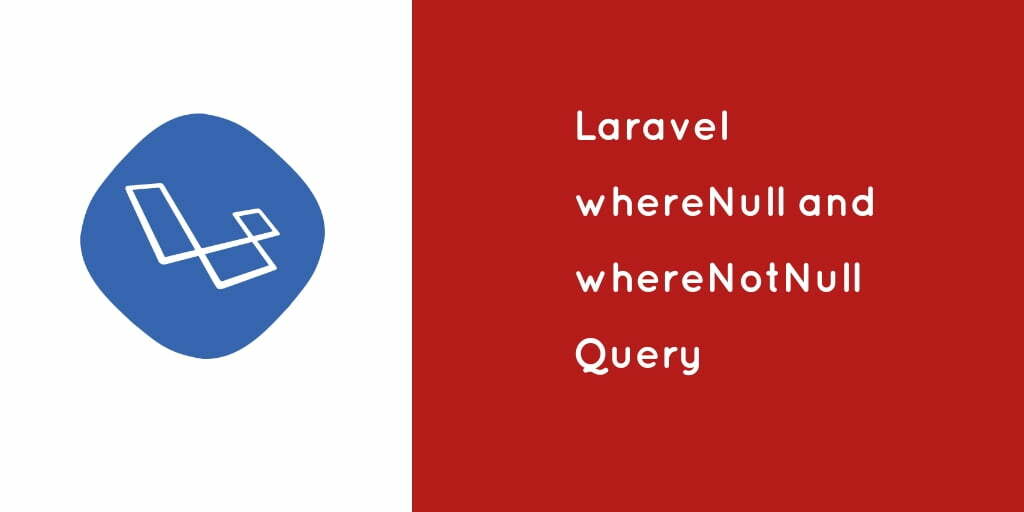








![Update column to Nullable in Laravel Migration? [SOLVED] | GoLinuxCloud Update Column To Nullable In Laravel Migration? [Solved] | Golinuxcloud](https://www.golinuxcloud.com/wp-content/uploads/column-nullable.jpg)





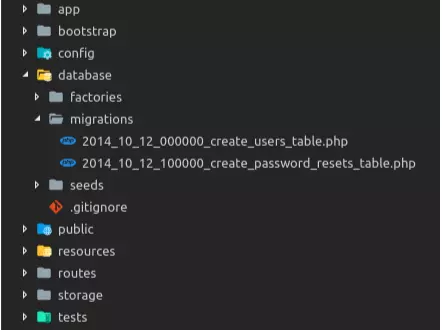
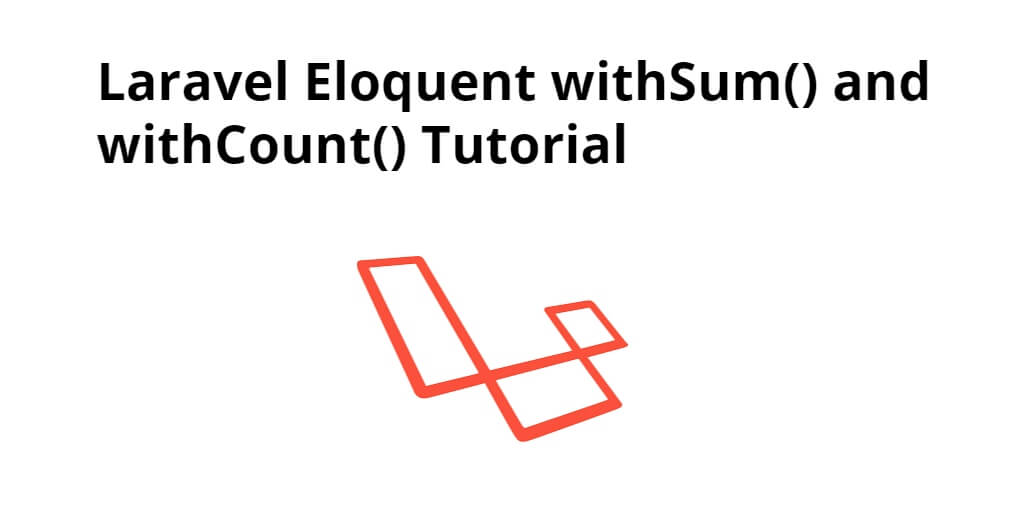



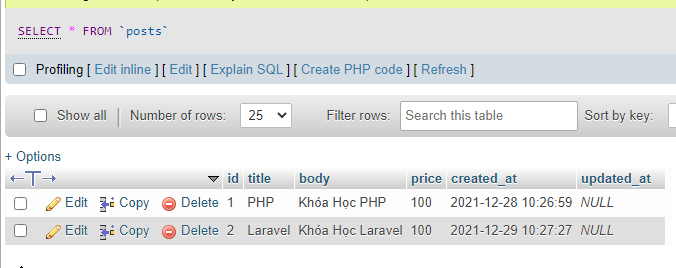
![php - Laravel Property [title] does not exist on the Eloquent builder instance - Stack Overflow Php - Laravel Property [Title] Does Not Exist On The Eloquent Builder Instance - Stack Overflow](https://i.stack.imgur.com/U2oOh.png)

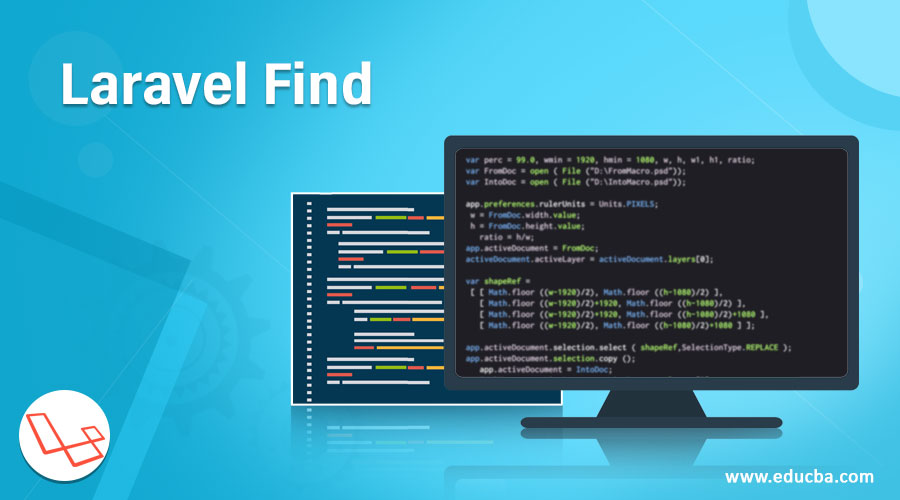





Article link: eloquent where not null.
Learn more about the topic eloquent where not null.
- Where null and Where not null eloquent query example
- How do you check “if not null” with Eloquent? – Stack Overflow
- How to check “if not null” with Laravel Eloquent? – DevDojo
- Laravel 8 Where Null and Where Not Null Query Example
- How do you check if a field is NOT NULL with Eloquent
- Laravel Eloquent whereNotNull() Query Example
- How to Query Column That is Not Null In Laravel – PostSrc
- Laravel whereNull and whereNotNull Query Example
- Laravel Eloquent whereNull and whereNotNull Query Method